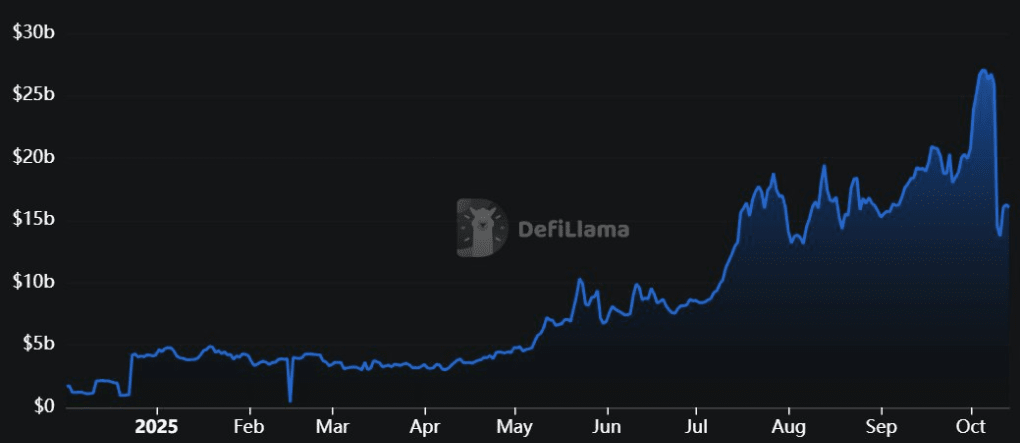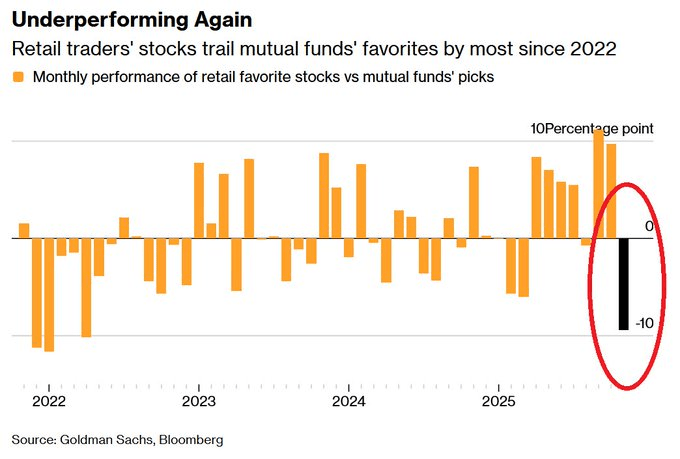On October 11, 2025, the cryptocurrency market experienced an unprecedented flash crash. Bitcoin prices plummeted from their peak, leaving the market in despair. Initially, public opinion pointed fingers at geopolitical issues, macroeconomic factors, or some sudden policy. However, more than a month later, as the smoke cleared, the truth emerged.
1. A Misunderstood Crash
Tom Lee, co-founder of Fundstrat and chairman of BitMine, revealed the root of this crash on a CNBC program: it was not the macro narrative that people imagined, but rather a structural short circuit stemming from the core engine of the market coming to a halt—a 'financial black hole' that exploded on the market makers' balance sheet, triggering a chain reaction of liquidity exhaustion.
 Two, The 'invisible central bank' of the market: What are market makers?
Two, The 'invisible central bank' of the market: What are market makers?
To understand this crisis, one must first understand the role of market makers in the crypto world. Tom Lee has a sharp metaphor for this: 'Market makers are essentially like the central bank of cryptocurrencies.'
● Providers of liquidity: Market makers provide immediate trading liquidity to the market by continuously placing orders on both the buy and sell sides. They act as the 'lubricant' of the market, ensuring that investors can buy or sell assets at reasonable prices at any time, maintaining the normal operation of the market.
● Spread earners: Their profit model is to earn the small spread between buying and selling prices through high-frequency matching trades. This is a precision system that relies on the smooth operation of the market.
● Stabilizers of the system: Under normal circumstances, their presence can effectively smooth out abnormal price fluctuations and absorb small market shocks. They are the 'invisible hands' hidden beneath market order.
Three, Disaster Moment: What happened on October 11th?
On October 11th, an extreme unilateral market completely destroyed this precision system.
● Model failure: Severe and unprecedented price volatility has rendered the risk hedging models that market makers depend on completely ineffective. The value of the assets they hold (such as Bitcoin and other cryptocurrencies) has sharply decreased, while liabilities still exist.
● Huge losses: According to Tom Lee's analysis, on that day alone, the losses of large market maker groups reached as high as $19 billion to $20 billion. This huge hole is the 'financial black hole' blown out on their balance sheets.

● Safety net rupture: When the 'invisible central bank' suffers severe damage, the safety net it provides for the entire market also ruptures. Liquidity, the oxygen on which the market depends, is instantly drained.
Four, Death Spiral: The vicious cycle of liquidity exhaustion
The emergence of the 'financial black hole' triggered a series of ruthless mechanical sell-offs, dragging the market into a death spiral.
● Self-rescue selling: To fill the capital gap, meet margin requirements, and 'stop the bleeding', market makers have no choice but to sell off large amounts of their high-quality liquid assets (including Bitcoin and Ethereum) to recover cash. This is precisely when providers of liquidity become extractors of liquidity.
● Order book drying up: Tom Lee pointed out that at the worst times, the depth of the order book shrank dramatically, with liquidity evaporating by 98%. This means the market became extremely fragile, and a small number of sell orders were enough to breach multiple price points, triggering a new round of declines.
● 'Crypto version of quantitative tightening': This is not a policy tightening initiated by the Federal Reserve, but rather an endogenous 'quantitative tightening' triggered by the need for survival in the market. Market makers collectively withdraw funds, just like banks tightening credit during a crisis.
● Predatory trading and chain liquidations: In a thin liquidity environment, predatory traders take advantage of the situation, deliberately pushing down prices through small sell orders. Each price drop triggers more forced liquidation orders from leveraged traders, which further exacerbates the decline due to a lack of buying support. At this point, the price no longer reflects the intrinsic value of the assets but only mirrors the temporary failure of the market mechanism.
Five, Path to Recovery: Which stage are we in?
As of late November, the market is in the sixth week after the disaster. Historical experience (such as similar crises in 2022) shows that pure liquidity crises usually take about eight weeks to gradually ease.
● The repair of market makers: Currently, the surviving market makers are rebuilding the 'firewall' through three major measures:
○ Position reduction: Continue to control risk exposure and reduce positions.
○ Capital increase: Seek external capital injection to fill the capital gap.
○ Hedging: Adopt more conservative and robust risk management strategies.
● The trend of 'smart money': During the most fearful times in the market, some institutions have already seen opportunities. For example, BitMine Immersion Technologies bought 54,000 ETH at an average price during the crash, worth about $173 million. This action indicates that professional participants view this crisis as a temporary liquidity shortage rather than a fundamental reversal of the long-term cryptocurrency fundamentals.

● The current state of the market: The most intense 'bleeding period' seems to have passed, but the market's 'ecological pool' remains murky. The entire system is still fragile, liquidity has not fully recovered, and prices are exceptionally sensitive to any news.
Six, Lessons and Prospects: Where are the coordinates of investors?
This crisis has provided a heavy lesson to every market participant.
● Distinguish between 'failure' and 'decay': The core test investors currently face is the patience to discern signals from noise. It must be clearly recognized that this is a 'mechanical failure' of the market (liquidity mechanism short-circuit), rather than 'organ decay' (permanent deterioration of fundamentals). Confusing the two in panic may lead to relinquishing valuable chips at the bottom.
● The value of liquidity: In the modern financial system, liquidity is far more fundamental than faith and narratives. It is the 'oxygen' of market life. Once oxygen-deprived, even the highest quality assets can suffocate in the short term.
● Potential for rebound: Liquidity is like a compressed spring, its return can often trigger a rapid 'vengeful rebound'. Once market makers finish repairing their balance sheets and resume providing liquidity, combined with potential favorable policies (such as support from the new Trump administration), the market is expected to usher in a strong upward momentum.
● Final advice: Tom Lee's analysis reveals the underlying logic of market operations. In the face of still weak market walls, prudent asset allocation, strict risk control, and a deep understanding of the market mechanism itself are key for investors to survive and even thrive in the next wave of turbulence. Do not lose hope in the darkest moments, nor forget the lessons when the dawn begins to appear.
The October 11 flash crash was a chain disaster triggered by the collapse of the market's core pillar—market makers. It profoundly reveals that in the highly financialized cryptocurrency market, liquidity is not only a driving force for prosperity but can also be an accelerator for collapse. Understanding and respecting this mechanism is essential to navigate through bull and bear markets steadily and far.
Join our community, let's discuss together and become stronger!
Official Telegram community: https://t.me/aicoincn
AiCoin Chinese Twitter: https://x.com/AiCoinzh
OKX benefit group: https://aicoin.com/link/chat?cid=l61eM4owQ
Binance benefit group: https://aicoin.com/link/chat?cid=ynr7d1P6Z



